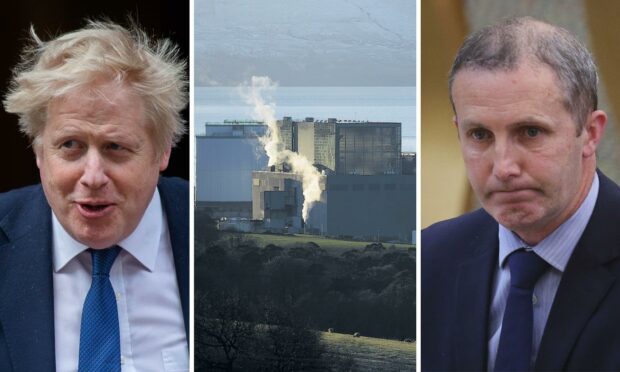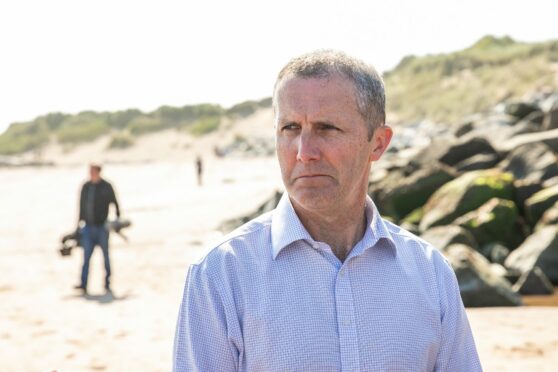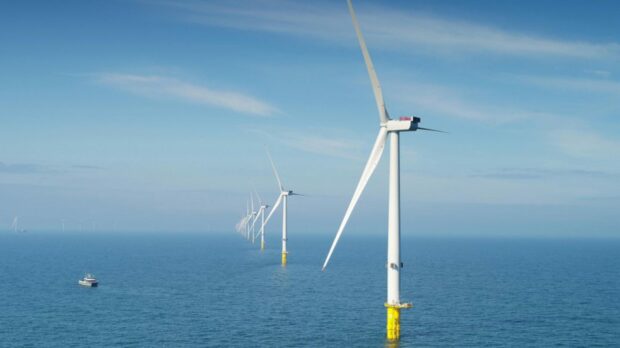The SNP Government says it will halt any attempts to bring new nuclear power developments to Scotland, despite a new UK energy strategy pledging up to eight new reactors.
Scottish energy secretary Michael Matheson says the government in Holyrood remains firmly against any more nuclear power stations, and will use its planning powers to stop them.
He made the opposition clear as the UK Government published its new energy strategy, which the Scottish Government says it had no part in designing.
The report backs investment in nuclear, offshore wind and hydrogen power in a bid to make 95% of the UK’s electricity low carbon by 2030.
It is also expected to deliver 40,000 more jobs in “clean industries” within the next eight year.
‘We oppose nuclear energy’
The energy secretary says nuclear energy is “the most expensive form of electricity”, and there are environmental and safety concerns.
He said: “We oppose nuclear for three reasons.
“The environmental impact lasts for generations and the taxpayers today have to pay for it.”
He added: “There are safety concerns because when problems happen they are significant.
“And thirdly, it is the most expensive form of electricity that we choose to produce.
“For example at Hinkley Sea the price per megawatt is £92 but the price for renewables is almost half of that.”
When asked if the government would use its planning powers to block any moves by the UK Government, Mr Matheson said: “Yes – the Scottish Government is not in favour of nuclear power and we don’t see it as part of the future energy mix.
“There is no likelihood of that changing.”
How can Holyrood stop nuclear?
Although energy is reserved to Westminster, Holyrood still has full responsibility over planning in Scotland.
This means the Scottish Government has an effective veto on any new nuclear developments from the UK Government.
Only two months ago the government shut down Hunterston B Power Station in West Kilbride, leaving Torness Power Station in East Lothian as Scotland’s only nuclear site for producing energy.
Torness is scheduled for retirement in 2028.
Nuclear, renewables and oil and gas
The energy plan includes proposals for nuclear, North Sea oil and gas, and renewable energy.
It includes plans for eight new nuclear reactors.
NEW📢Energy Security Strategy to make cleaner, more affordable energy in the UK, for the UK
🌱accelerating wind, nuclear, solar & hydrogen
⚡95% electricity to be low carbon by 2030
👷over 40k more green jobsBoosting our independence, security & growthhttps://t.co/LyJyMQHV5A
— Dept for BEIS (@beisgovuk) April 7, 2022
However, it will also be opening up a new licencing round for North Sea oil and gas projects in the summer, as producing gas in the UK has a lower carbon footprint than doing so abroad.
Meanwhile, it wants to reform the rules for installing solar panels on homes and commercial buildings to increase solar capacity by up to five times by 2035.
It also wants to reform its planning laws to speed up approvals for new offshore wind farms.
When it comes to onshore wind farms, the government says it wants to work with “supportive communities” who want to host turbines in exchange for guaranteed cheaper energy bills.
Labour climate change spokesman Ed Miliband says the rejection of onshore wind was a win for Tory backbenchers and people “will pay higher bills as a result”.
Finally, targets for hydrogen production are being doubled and there will be a £30 million “heat pump investment accelerator competition” to make British heat pumps and reduce the demand for gas.
Currently 24% of Scotland’s energy comes from renewable sources – the government’s aim is 50% by 2030.
‘Nuclear is coming home’
Since releasing the energy report, Prime Minister Boris Johnson said “nuclear is coming home”.
In a social media video to promote the plan, he said: “In the country that was the first to split the atom, the first truly to harness its power to light our homes and drive our factories, we will once again lead the way.
“Nuclear is coming home.”
For years, governments have dodged the big decisions on energy, but not this one.
Our Energy Security Strategy sets out our plans to make British energy cleaner, more affordable and more secure. pic.twitter.com/BQwuR4FawV
— Boris Johnson (@BorisJohnson) April 7, 2022
He adds: “So instead of a new reactor every decade we will have a new reactor every year.
“For years, governments have dodged the big decisions on energy, but not this one.
“We’ve got the ambition, we’ve got the plan and we are going to bring clean, affordable, secure power to the people for generations to come.”
North-east MSP Liam Kerr, the Tory energy spokesman, said the plan is “modern” and “will mean hitting Putin where it hurts.”
He also criticised the SNP for their opposition to nuclear energy.
Scottish Greens – in coalition with the SNP at Holyrood – said the new proposals are “not fit for purpose”.
They added: “A commitment to new nuclear power will take decades to deliver costly energy, produce a toxic waste legacy, and apparently still deliver less energy than the Scottish Government’s ScotWind offshore programme – it simply doesn’t make sense.”
Does Scotland need new nuclear power stations as Hunterston B shuts down?


